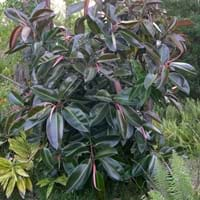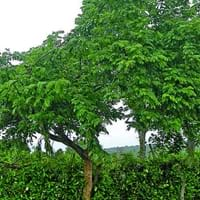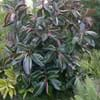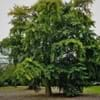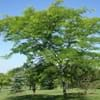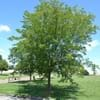Life Span
Perennial
Perennial
Origin
Southern Asia, Southeastern Asia, India, Nepal
Mexico, Central America, South America
Types
not available
Not available
Habitat
agricultural areas, Along Railroads, Coastal Regions, Forests, Roadsides, Scrubs, Suburban areas
Subtropical climates, tropical environments, Tropical regions
USDA Hardiness Zone
10-11
10-15
Sunset Zone
H1, H2, 16, 17, 19, 20, 21, 22, 23, 24
H1, H2, 13, 23, 24
Habit
Upright/Erect
Oval or Rounded
Flower Color
Not Available
Pink, Light Pink
Flower Color Modifier
Bicolor
Bicolor
Fruit Color
Yellow, Yellow green
Green, Chocolate
Leaf Color in Spring
Red, Dark Green, Crimson
Green
Leaf Color in Summer
Red, Dark Green, Crimson
Green
Leaf Color in Fall
Red, Dark Green, Crimson
Green
Leaf Color in Winter
Red, Dark Green, Crimson
Green
Leaf Shape
Elliptic to oblong
Pinnate
Plant Season
Spring, Summer, Fall, Winter
Spring
Sunlight
Full Sun, Partial Sun, Partial shade
Full Sun, Partial Sun
Type of Soil
Loam, Sand
Loam, Sand
The pH of Soil
Acidic, Neutral, Alkaline
Acidic, Neutral, Alkaline
Soil Drainage
Well drained
Average
Bloom Time
Not Available
Spring, Late Spring
Tolerances
Not Available
Drought, Dry Conditions
Where to Plant?
Ground
Ground
How to Plant?
Seedlings, Vegetative Reproduction
Stem Cutting
Plant Maintenance
Medium
Low
Watering Requirements
Keep ground moist, Requires a lot of watering
Average Water Needs, Keep the ground moist but not water-logged
In Summer
Lots of watering
Lots of watering
In Spring
Moderate
Moderate
In Winter
Average Water
Average Water
Soil pH
Acidic, Neutral, Alkaline
Acidic, Neutral, Alkaline
Soil Type
Loam, Sand
Loam, Sand
Soil Drainage Capacity
Well drained
Average
Sun Exposure
Full Sun, Partial Sun, Partial shade
Full Sun, Partial Sun
Pruning
Prune for shortening long shoots
Remove damaged leaves, Remove dead branches, Remove dead leaves
Fertilizers
don't fertilize in winter
All-Purpose Liquid Fertilizer, Fertilize in early spring, Nitrogen, Phosphorous, Potassium, Requires high amount of nitrogen
Pests and Diseases
Mealybugs, Red blotch, Scale, Spider mites, Yellow Leaves
Aphids, Brown Spots, Scab, Scorch
Plant Tolerance
Not Available
Drought, Dry Conditions
Flowers
Insignificant
Showy
Flower Petal Number
Not Available
Single
Showy Fruit
No
Not Available
Fragrant Flower
No
Not Available
Foliage Texture
Bold
Medium
Foliage Sheen
Glossy
Matte
Attracts
Not Available
Bees, Not Available
Allergy
Asthma, breathing problems
Not Available
Aesthetic Uses
Showy Purposes
Beautification, Showy Purposes
Beauty Benefits
Not Available
Good for skin, Reduce Bruises
Environmental Uses
Air purification, soil erosion prevension on hill slopes
Agroforestry, Fixes Nitrogen, Insect Repellent, soil stabilisation
Medicinal Uses
Not Available
Antifungal, Cold, Expectorant, Fever, Rheumatism, Sedative, Ulcers
Part of Plant Used
Latex
Flowers
Other Uses
Making rubber, Making tyres
Cattle Fodder, Used as firewood, Wood is used for making furniture
Used As Indoor Plant
Yes
No
Used As Outdoor Plant
Yes
Yes
Garden Design
Container, Feature Plant, Houseplant, Shade Trees, Tropical
Shade Trees, Street Trees, Tropical
Botanical Name
FICUS elastica
GLIRICIDIA sepium
Common Name
Rubber Plant
Mexican Lilac, Mother-of-coffee, Quickstick
In Hindi
रबड़ का पौधा
QUICKSTICK
In German
Ficus elastica
QUICKSTICK
In French
Ficus elastica
QUICKSTICK
In Spanish
ficus
QUICKSTICK
In Greek
ελαστικός φίκος
QUICKSTICK
In Portuguese
fábrica de borracha
QuickStick
In Polish
gumy roślin
QUICKSTICK
In Latin
Flexilis herba
Quickstick
Phylum
Tracheophyta
Magnoliophyta
Class
Magnoliopsida
Magnoliopsida
Clade
Angiosperms, Eudicots, Rosids
Angiosperms, Eudicots, Rosids
Subfamily
Not Available
Faboideae
Number of Species
Not Available
Season and Care of Ficus Elastica and Quickstick
Season and care of Ficus Elastica and Quickstick is important to know. While considering everything about Ficus Elastica and Quickstick Care, growing season is an essential factor. Ficus Elastica season is Spring, Summer, Fall and Winter and Quickstick season is Spring, Summer, Fall and Winter. The type of soil for Ficus Elastica is Loam, Sand and for Quickstick is Loam, Sand while the PH of soil for Ficus Elastica is Acidic, Neutral, Alkaline and for Quickstick is Acidic, Neutral, Alkaline.
Ficus Elastica and Quickstick Physical Information
Ficus Elastica and Quickstick physical information is very important for comparison. Ficus Elastica height is 180.00 cm and width 90.00 cm whereas Quickstick height is 610.00 cm and width 460.00 cm. The color specification of Ficus Elastica and Quickstick are as follows:
Ficus Elastica flower color: Not Available
Ficus Elastica leaf color: Red, Dark Green and Crimson
Quickstick flower color: Pink and Light Pink
- Quickstick leaf color: Green
Care of Ficus Elastica and Quickstick
Care of Ficus Elastica and Quickstick include pruning, fertilizers, watering etc. Ficus Elastica pruning is done Prune for shortening long shoots and Quickstick pruning is done Remove damaged leaves, Remove dead branches and Remove dead leaves. In summer Ficus Elastica needs Lots of watering and in winter, it needs Average Water. Whereas, in summer Quickstick needs Lots of watering and in winter, it needs Average Water.
